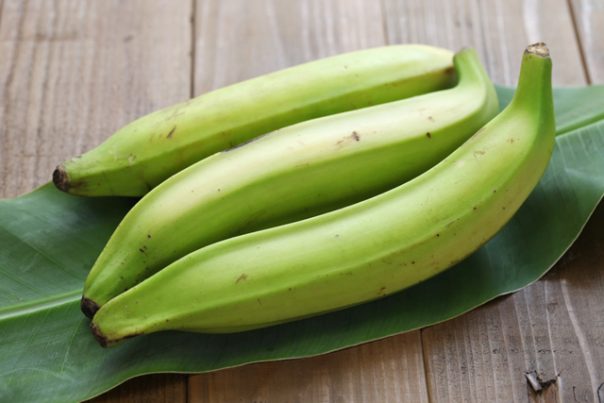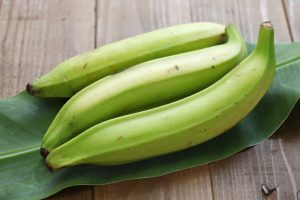
Plantains – sources, health benefits, nutrients, uses and constituents at NaturalPedia.com
Wednesday, June 21, 2017 by Bridgette Wilcox
http://www.naturalpedia.com/plantains-sources-health-benefits-nutrients-uses-and-constituents-at-naturalpedia-com.html

Plantains look very similar to bananas. They have the same shape, but are typically bigger and have less sugar content. They need to be cooked to be eaten, as raw plantains can be very hard and starchy. Plantains can be either green, yellow, or black, and their color depends on their ripeness. According to PaleoLeap.com, green plantains are the most starchy, with a similar flavor to potatoes. On the other hand, yellow plantains are less starchy and a bit more sweet. Black plantains are sweetest and softest, and work best for dessert dishes. Plantains are a staple in Latin American dishes.
They grow best in tropical climates, particularly in the Carribean, West Africa, and India. They are not a seasonal fruit, so they grow all-year round.
List of known nutrients
According to Nutrition-and-You.com:
- Calcium
- Folates
- Iron
- Magnesium
- Niacin
- Phosphorus
- Potassium
- Pyridoxine
- Riboflavin
- Sodium
- Thiamin
- Vitamin A
- Vitamin B6
- Vitamin C
- Vitamin E
- Vitamin K
- Zinc
Medicinal uses for plantains
Plantains contain many nutrients that provide the body with countless health benefits. They provide a good amount of dietary fiber, treating constipation, and ensuring regular bowel movements.
They also have a high amount of vitamin C, giving the immune system a boost and strengthening resistance against infections. Vitamin C is also an antioxidant that protects the body from harmful free radicals that damage cells.
Plantains also have a considerable amount of vitamin A, another antioxidant that also enhances the skin.
They are a rich source of vitamin B-complex, especially vitamin B6, also known as pyridoxine, which is linked to treating neuritis and anemia. Vitamin B6 is also known to decrease homocysteine, which can lead to coronary artery disease (CHD) and stroke.
With their magnesium levels, plantains also strengthen the bones and promote bone health while protecting the heart.
Like bananas, plantains contain a substantial amount of potassium, which helps control the heart rate and blood pressure, contributing to a healthier cardiovascular system.
Plantains may also be efficient against:
- Dysentery
- Edema
- Jaundice
- Leukorrhea (thick, whitish or yellowish discharge from the vagina)
Body systems supported by plantains
Here are the body systems that benefit from avocado, according to HealthLine.com:
- Bones and skin
- Cardiovascular system
- Digestive system
- Immune system
Ways to use plantains
Plantains are a versatile ingredient that can be used in a great number of ways. Many recipes feature fried or toasted plantains, as shown on FoodNetwork.com. Plantains are largely used in Latin American cuisine, and are the main component of dishes such as tostones (flattened and twice-fried plantains). They can also be used as a replacement for potato, and can be turned into chips or mash. They go well with beans, and can even be included in sandwiches and salads.
Where to learn more
- Plantain, a common driveway weed, is one of nature’s most powerful medicines
- Common Backyard Weed is True Healer
- Food Insecurity: A Solution Grows Under Your Feet
- 7 top Natural First-Aid kids and Remedies
- 5 Herbs for lung cleansing and respiratory support
Summary
Plantains are effective in treating constipation.
Plantains enhance the skin.
They support the immune system and protect against free radical damage.
Plantains can prevent stroke.
They can be used as a remedy for neuritis and anemia.
Plantains lead to improved heart health and can prevent coronary artery disease.
Sources include:
Tagged Under: Tags: plantains






